Last Updated on 20/03/2023
The attractions near Dresden are no less curious than the city itself (read more about Dresden): these are natural attractions – the so-called Saxon Switzerland begins here, and palaces, castles, and museums. I managed to visit two places – the Bastei rocks and the Königstein fortress. About them in more detail, about the rest briefly with a map.
What to see in Saxon Switzerland and Osterzgebirge. Maps
Dresden attractions
Welcome cards and public transport in Dresden and surroundings
Brandenburg What to see. 1
Potsdam park Sanssouci
Harz. 4. Quedlinburg old town
Harz. 5. Thale, children program in Harz
Table of Contents
Bastei rocks
An unusual Bastei rock formation is located near the small village of Kurort Rathen.
Directions – by train S1 in the direction of Bad Schandau (runs twice an hour), then by ferry across the Elbe and then on foot following the sign. The whole trip is approximately half a day (from 10 am to 2 pm). The ascent is quite steep, but along a well-maintained path. It takes from 40 minutes to an hour depending on physical fitness. If you don’t feel like climbing at all, a bus goes up from the village. Also, the bus runs once an hour (9.30-15.30) from the previous train station – the village of Wehlen.
At the very top – a bridge over the abyss, an observation deck.
Separately fenced Felsenburg Neurathen (a couple of euros for entry). At this place since the 13th century. there was a castle-fortress where they took refuge in wartime. From the 16th century the castle was destroyed, and in the second half of the 20th century was reconstructed. The bridge leading to the fortress across a 110-meter abyss used to be wooden.
The open-air theater Felsenbühne Rathen was set up in the rocks in 1936. Ticket offices are downstairs, halfway to the Amselsee lake. On this artificially created lake, a 10-minute walk from the village, you can ride a boat, and in the stream that feeds the lake, you can catch trout (for a fee, of course).



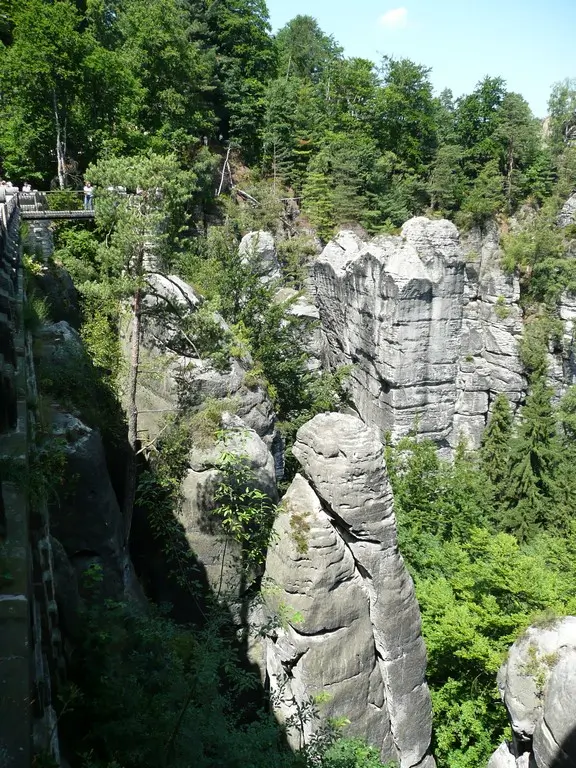






The entire region from Dresden to the Czech Republic is called Saxon Switzerland. With the transition to the Czech Republic, it is called Bohemian Switzerland. There are many hiking trails here. There is a also cycle route along the Elbe. Both ordinary and steam ships go along the Elbe.
Königstein fortress
The first mention of the Königstein fortress dates back to 1241 – it was a medieval fortress that belonged to the Bohemian kingdom. At the beginning of the 15th century the fortress passed to Saxony. From the 16th century the fortress served as a refuge for the royal family during the war. Jewels and the state treasury were hidden here. From the end of the 16th century Königstein fortress also serves as a prison. During the World Wars, there were prison camps here.


The Königstein fortress is located on a 150-meter cliff. Up from the railway station can be reached on foot (about 1 hour), or you can go on a fearsome wooden double-decker bus. Then you will be offered to transfer to a small train, which will take you to the foot of the fortress. Then you can go on foot again, but it is wiser to use the elevator. You can go down on foot if you wish, and on the way back.

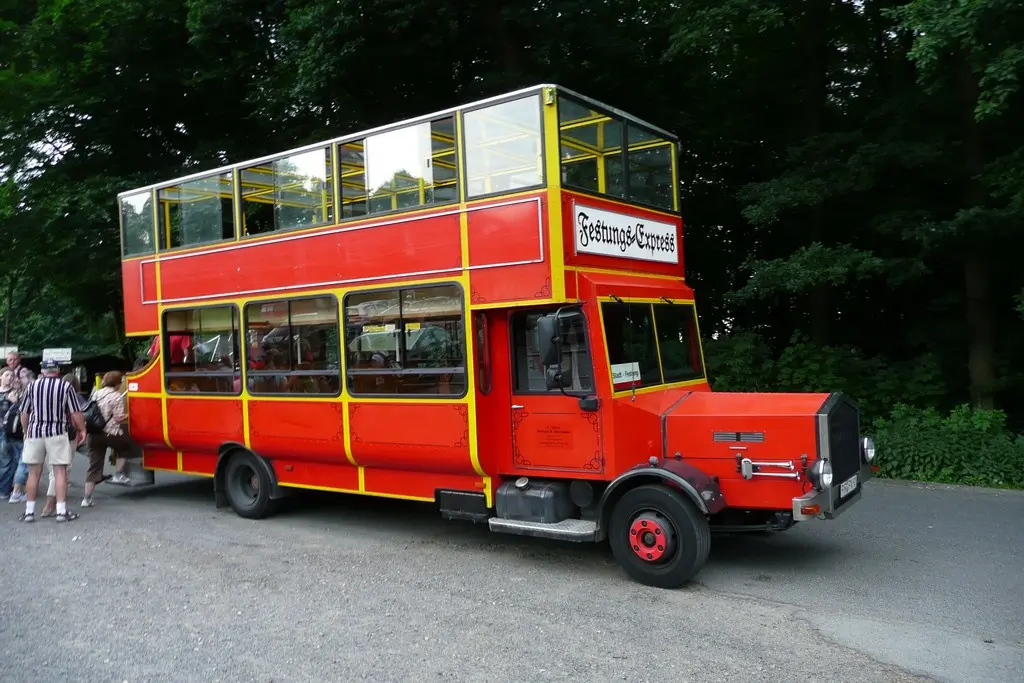
Together with the ticket, it is advisable to purchase for 1 euro a plan of the fortress, otherwise nothing will be clear. The plan hangs on the territory in only one place and it is extremely unsuccessful.

During its existence, the fortress has never been taken, so much has not changed here for centuries.
In addition to the bastions, ditches, cannons, the fortress wall, barracks, you can see several expositions:
the well house (the history of the well and the rise of water, a demonstration of the rise of water is held in summer),
the commandant’s apartment,
the commandant’s stable,
the repository of the state treasury,
an exhibition of the history of Saxon weapons,
a cellar, where there were three giant wine barrels.


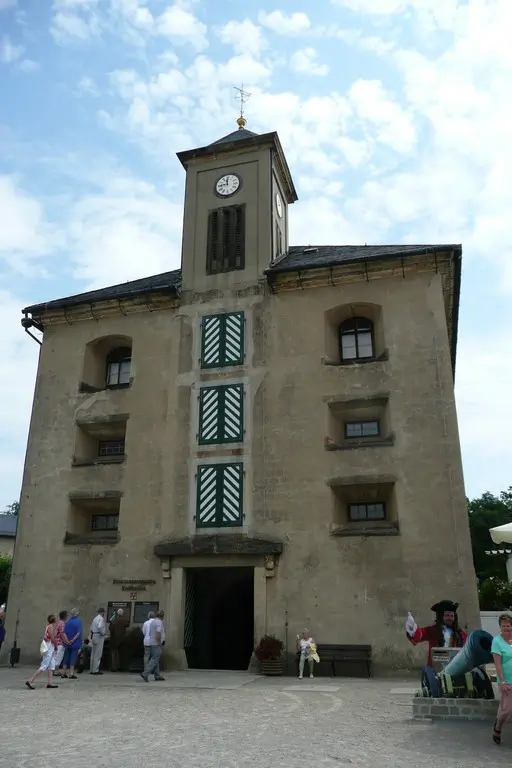


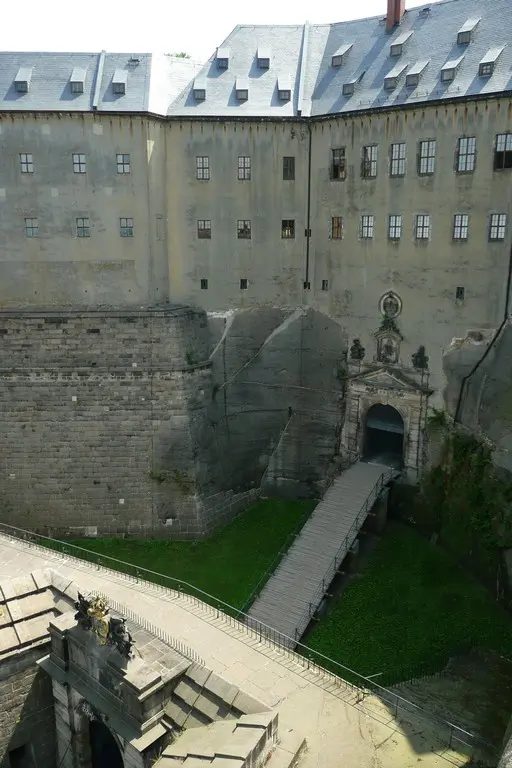


You can see Bastei rocks.





Königstein also has:
Elbe Freizeitland amusement park with simple rides, climbing wall, Flying Fox, slides and other attractions. The park is further up the Elbe. Link
Rope park at the foot of the fortress Link
Other attractions near Dresden
We start from the north of Dresden and move down the Elbe. There are other castles around Dresden, but many have retained only the exterior and serve for events and other purposes. I mention only most interesting, that you also can visit, not only look at.
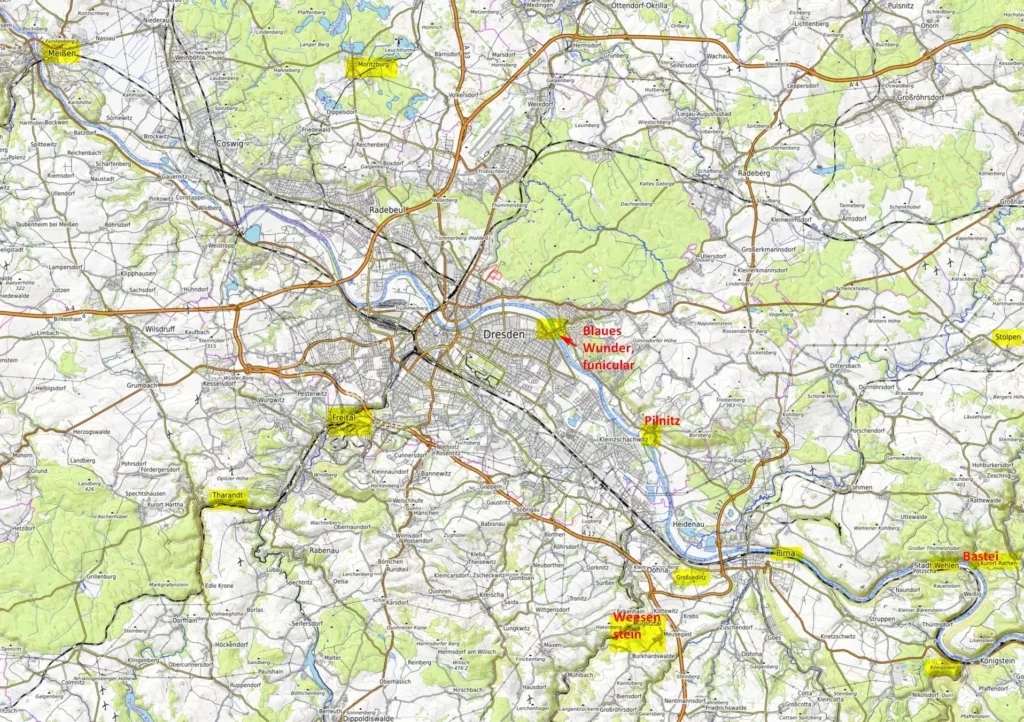
Hunting castle in Moritzburg. The castle (1736) displays the hunting trophies of Augustus the Strong, a collection of Baroque furniture, Oriental and Meissen porcelain.
There is also something to do around the castle: a rope park, several small lakes, animals, plants.
Meißen. Attention deserves, firstly, the city itself – it arose around the castle of Albrechtsburg in the 10th century. and largely retained medieval features. The cathedral was built in the 12th-15th centuries, the altar in it was painted by Lucas Cranach the Elder.
Albrechtsburg Castle (15th century) – the oldest residence in Germany. In the 18th century, August the Strong set up a porcelain manufactory here. Now in the castle you can see apartments and an exhibition of medieval sculpture. The history of the porcelain manufactory and the porcelain products themselves are presented in the museum at the factory.
Burg Stolpen castle slightly out of the route along the Elbe and is located east of Dresden. This is a medieval castle, the most significant event in the history of which was the imprisonment in it for 50 years of the most famous mistress of Augustus the Strong – Countess Kozel.
Barock gardens Gross-Sedlitz. The most significant garden complex created under Augustus the Strong. The garden is laid out in the French style, decorated with sculptures and fountains.
Schloss Weesenstein castle is across the autobahn from the gardens. The castle, which existed for 700 years, was repeatedly rebuilt, changing architectural styles: from Romanesque to Renaissance, and from it to Baroque. Features of all styles are preserved in its appearance. The royal apartments have been preserved, in which King John of Saxony carried out his translation of Dante.
Pirna – old town on the Elbe
Follow me
Wehlen – town next to the Bastei rocks. Next to it, you can also visit the miniature park dedicated to Saxon Switzerland.
If you have been in Dresden for a long time and still have free time, you can look into
– Tharandt – castle ruins, forest botanical garden
– and Freital – Schloss Burgk 16th century with an extensive museum collection from mining to paintings
Other topics related to #Saxony
#Brandenburg
#Saxony-Anhalt
Do you enjoy the site without cookies? This means that I work for you at my own expense.
Perhaps you would like to support my work here.
Or change your cookie settings here. I don’t use personalized ads







